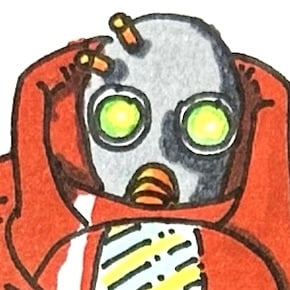It seems to me that in the interwar period there were a lot of tanks designed with the idea that they would stay with groups of infantry, providing direct fire support while being a lot more durable than a field gun. My understanding is that this was generally abandoned in favour of faster tanks which operated somewhat independently of infantry. But to my very limited knowledge, the infantry tank seems to make sense. What were the theory’s disadvantages? (Or is my understanding flawed?)
Tanks were originally just for busting through lines and then the tankers would dismount and fight.
That tactic was begrudgingly abandoned due to the efforts of the originator of the blitzkrieg, a British tanker named John Frederick Charles “Boney” Fuller. He fought hard to abandon the cavalry esque tank warfare doctrine in favor of tanks pushing with infantry following to secure land in their wake behind other mounted forces. The German Blitz was a direct product of the war theory writings of Fuller that was religiously studied by Heinz Guderian and actually implemented to devastating effect.
Following a tank to protect against an entrenched enemy was slow and left too many troops open to fire from off axis angles of attack. A single machine gun entrenchment, it was effective in preserving forces but, if there were adjacent emplacements, the troops were easy targets. It was better to pound emplacements with artillery and planes, then follow up with tanks, and finally troops to mop up what remained.
Modern doctrine is to bomb, send in armor, then armored vehicles with troops to clear and hold with air support to deal with harder targets. That is variable based on the exact enemy and terrain, but that is the basic formula.
So the tank leading troops was a relic of earlier doctrine and invalidated by advancements in war theory made possible by technological advancements in both aviation and artillery.
Begrudgingly is the word you’re looking for :)
That’s what I get for drunk posting.
Tanks are at their best when they can maneuver quickly. It’s hard to do that if there are friendly infantry close by. On top of that, being too close to a tank is dangerous for infantry. The tank is going to be drawing fire from many sources, and basically every time the armor gets hit there’s going to be shrapnel flying off the body of the tank. Bullets bounce, and a lot of modern armor platforms use reactive armor which explodes when hit.
Infantry and armor units absolutely train to cooperate, but it’s extremely hazardous for infantry to be very close to a tank during a battle.
I think your premise is a little off. Tanks generally are trained to operate alongside infantry in what is called combined arms tactics. This allows the tank to do its job while the infantry can protect it, and vice versa. This is especially useful in urban environments. Combine infantry with tanks, IFVs and support vehicles and you have a flexible and formidable force.
On top of that, rather than making t different anks for specific jobs, we tend to prefer making them multirole. This is the current trend with most land and air platforms. Notice there really aren’t a lot of designated attack planes anymore. We tend to prefer multirole airframes that can act in an air to air and CAS/ground attack role. It adds flexibility and simplifies the supply lines and training. The Abrams, and other nations’ MBTs are perfectly capable as main battle tanks as well as infantry tanks. No need for a second type of tanks with different parts and needs.
When they develop the tank jet it’s game over
It’s called the A-10
Well, I’m no expert, but I know Germany had these MASSIVE tanks (Tigers) during WW2, and the UK/US response was the Sherman tank, these small and fast little suckers, who technically couldn’t take them out, so they modified some of them in-field by replacing the turret and changing a few things inside to create the Sherman Firefly, which were these badass tank-killers. Suffice it to say, they made a lot of Shermans…
Isn’t that what IFV’s
IVF’sserve today?AFVs. in vitro fertilization is for next gen combat exclusively.
AKA AFV, but your typo! :D
https://en.wikipedia.org/wiki/Armoured_fighting_vehicle
I love that your link is a subset of my link and yeah, no more ‘infantry tank’ either way
Heh.
AFVs supplanted them and could carry the infantry.



